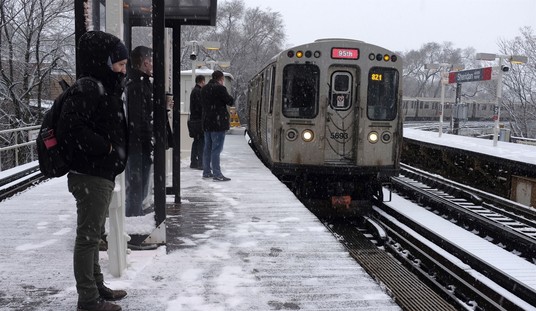As the lame duck session on Capitol Hill winds down, the Senate has the chance to approve the chronic copper version of the Keystone XL pipeline, the Resolution Mine in southeast Arizona.
The mine, which is projected to produce $60 billion in economic activity in its 60-year lifetime and create 4,000 local jobs, depends on a land swap. The mine’s developer, Rio Tinto, proposes to give the federal government 5,300 square acres of Arizona land for 2,400 square acres of copper-rich land from the Tonto National Forest, a reserve of protected land that covers three million square acres in the state.
For the last nine years, Republicans and Democrats in Arizona have struggled with powerful environmentalists over what would be the continent’s largest copper mine—with an output equal to 25 percent of current U.S. copper consumption.
One year ago, the land swap was about to come to the House floor, but it was pulled after Republicans were spooked into supporting a poison pill amendment brought by Rep. Ben Ray Lujan (D.-N.M.). The Lujan Amendment would have expanded the administrative authority of the Secretary of the Interior beyond protection of sacred sites to include culturally significant sites—as determined by the secretary.
The Lujan Amendment not only was a silver bullet to kill the Resolution Mine land swap, but it would have ended the extension of the Keystone XL pipeline with a memo.
In the latest attempt to resolve Resolution, Rep. Paul Gosar (R-Ariz.) attached his Southeast Arizona Land Exchange and Conservation Act to the National Defense Authorization Act. The NDAA with the Gosar bill passed 300-119.
In the Senate the bill has the support of Sen. John S. McCain III (R.-Ariz.), the Copper State’s senior senator and the ranking member of the Senate Armed Services Committee.
You might think it is a coincidence that this measure, supported by Democrats and Republicans from Arizona, would end up on the defense budget bill, but you would be wrong.
Remember, this is an area of the country, where they mine copper. It is a legacy profession, passed down through generations. The people living in southeast Arizona are not looking to work in a used book store or man the phones at a healthcare.gov call center.
The nearest town to Resolution Mine is Superior, and when you drive through look out for the tumbleweeds. A classic copper boomtown, Superior hit a wall after labor turmoil and low commodity prices killed off Magma Mine, an eight-shaft underground complex with 36 levels that took miners almost 5,000 feet below the surface.
Magma closed in 1982.
Leading the campaign against the land swap is the Mapetsi Policy Group, a boutique lobbying firm stocked with staffers from the Obama administration and Capitol Hill Democrats. Mapetsi is interrelated with the National Indian Gaming Association, and the two are infamous for teaming up to push for a new casino built on an Indian burial ground in Alabama.
This time, Mapetsi is playing the opposite angle, claiming the proposed land swap will violate sacred lands—except this time there is no sacred land. In fact, the nearest Native American settlement is 20 miles away. The only thing of note at Oak Flat is a 16-site campground with two outhouses and a dirt road.
In the Gosar language, the campground remains open until the last possible minute. Gosar also carved out the Apache Leap cliffs from the swap because of its scenic value to thousands of visitors per year.
The bottom line is that if the Resolution Mine land swap goes through, 4,000 breadwinners win bread again and there will be more land under federal protection than before without coming within 20 miles of a sacred Native American site.
When the NDAA bill comes to the Senate floor, senators will have a choice to help Americans get back to work or not. Maybe this time, jobs will win.








Join the conversation as a VIP Member